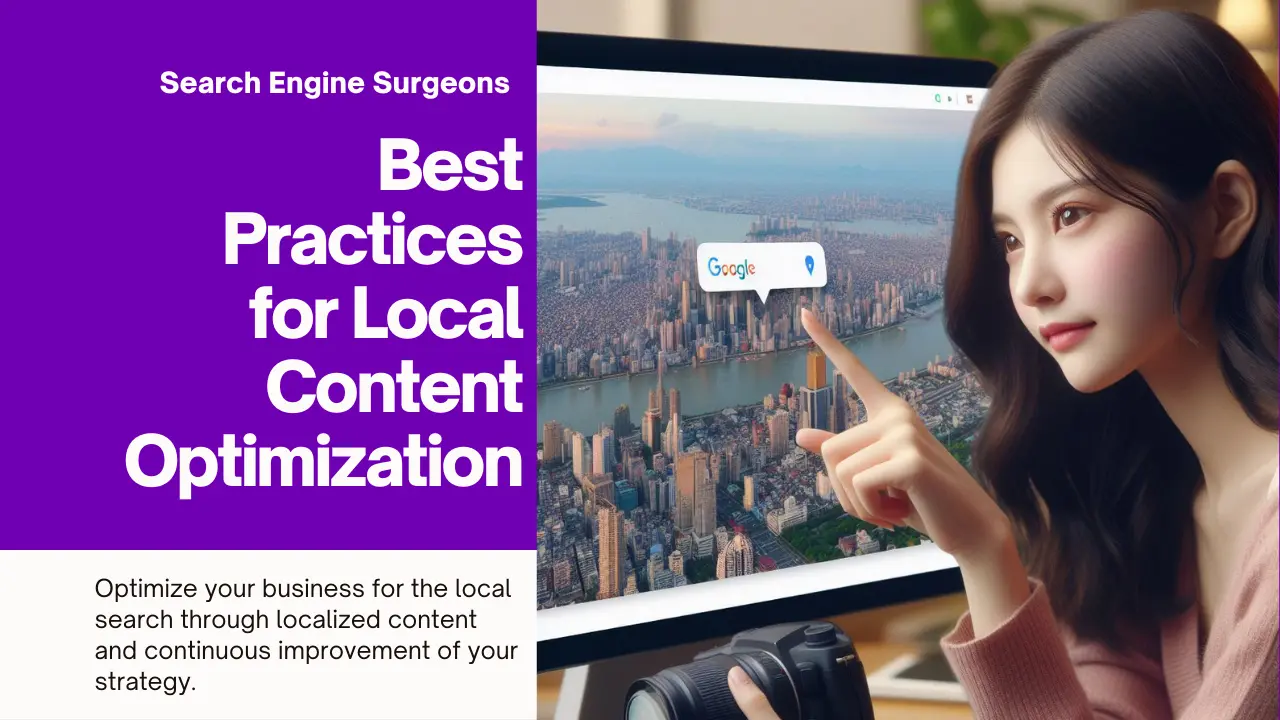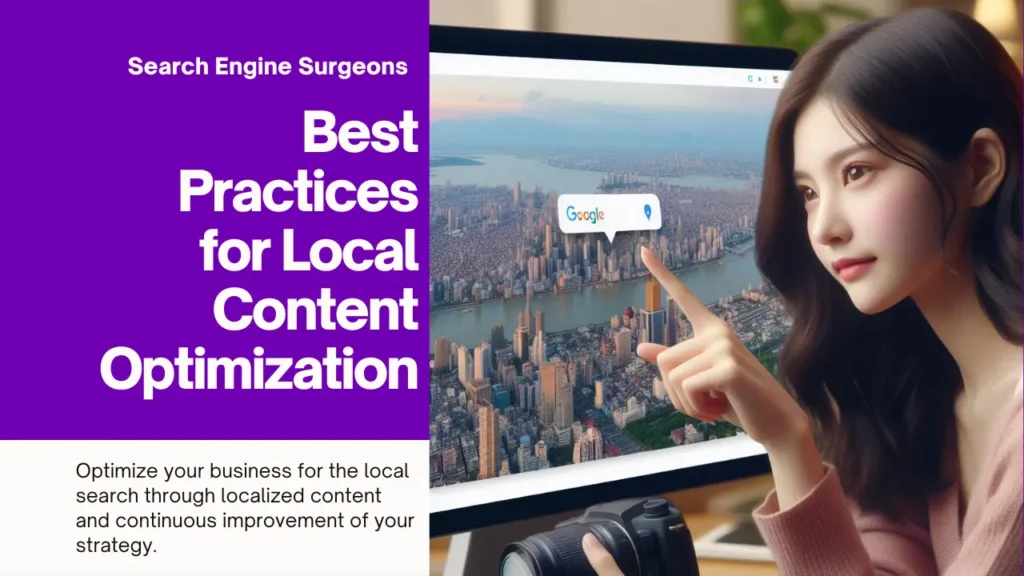In today’s digital world, standing out locally takes more than a strong product or convenient location. Customers increasingly turn to online content to research businesses and discover what matters most in their community. Those who do local content optimization best understand this shift and find creative ways to authentically connect with neighbors on a personal level.
Take the coffee shop that profiles a “barista of the month” with an anecdotal story, or the yoga studio Instagram highlighting a local charity each week. Through subtle acts of community engagement, they build goodwill that translates into loyal patrons. This guide distills best practices for businesses of any size to integrate local content into their greater marketing strategy. From events to partnerships, the goal is to give customers meaningful reasons to interact and invest in the businesses driving their neighborhood’s vitality.
Table of Contents
Understanding Your Local Audience
Connecting with customers on a personal level starts with thorough research into who makes up your local community. While demographic data provides a baseline, truly knowing your audience requires digging deeper.
Demographic Research
The first step is analyzing readily available demographic information for your area. Data sources like the US Census Bureau can shed light on key metrics like median age, household income, family size, education levels, and more. While useful for high-level profiling, demographics only scratch the surface.
Psychographic Insights
To better understand motivations and lifestyle preferences, consider supplementing demographic data with psychographic research. For example, you may find through community surveys that many local residents are passionate about environmental causes or the arts scene. You could also glean insights from community Facebook groups about current hot button issues.
Common Questions and Concerns
Getting a pulse on frequently asked questions is invaluable for informing content strategy and business operations. You may discover concerns around a new development project, budgeting for back to school expenses, or choosing activities for an aging parent. Proactively addressing these types of topics shows you understand local priorities.
In short, taking a multidimensional approach to audience research pays dividends long-term. Combining demographic profiles with psychographic and community sentiment data provides the well-rounded perspective needed to engage customers on a personal level.
Leveraging Local Events, Culture and Partnerships
Connecting to your community on a personal level requires understanding what brings neighbors together. Local events, cultural traditions, and strategic partnerships provide the perfect opportunities to authentically engage customers.
Community Calendar Listings
Whether it’s the farmers market every Saturday or Art in the Park on the first Friday of each month, community calendars hold a treasure trove of engagement possibilities. Make sure your business stands out by claiming a listing on sites like local government pages and Meetup.
Sponsorships and Collaborations
Authentically supporting causes and initiatives customers care about builds goodwill. Look for opportunities to sponsor little league teams, donate to fundraisers, or partner with organizations like the Chamber of Commerce. Locals will appreciate you giving back.
User-Generated Content from Influencers
Beyond promoting your own events, leverage local influencers by asking them to share customer photos from sponsored activities. The youth soccer coach or food blogger down the street can help spread organic word-of-mouth. Offering incentives like gift cards encourages user advocacy over time.
In this sharing economy era, customers increasingly turn to their community for trusted recommendations. Tapping into the social fabric of events and partnerships provides a meaningful way to participate in the lives of neighbors beyond just commerce.
Optimizing Content for Local Search and Readability
When customers in your area search online to find local businesses, your optimized content needs to stand out. Proper structuring helps both search engines and humans easily consume what you have to offer.
Keyword Research with Local Intent
Don’t just focus on broad keywords – drill down to the long-tail searches with local modifiers like “plumber near me”. Google which terms actual neighbors use when seeking services close to home.
Local Business Citations and Contact Details
List your business name, address, phone number and hours prominently on pages to build trust. Also claim profiles on Google, Bing and Yelp for increased local visibility.
Visuals, Headings and Scannable Formatting
Break up blocks of text with images, videos and white space. Use clear headings at various sizes to guide readers through content at a glance. Bolding, lists and bullet points aid scanning on mobile.
A little-known fact is that people spend on average 7 seconds evaluating search results. Grabbing attention quickly means the difference between consideration and obscurity. Crafting optimized pages with locals top-of-mind guides qualified customers straight to your virtual doorstep.
Engaging Audiences Through Social Media
In the digital age, customers increasingly turn to social platforms to discover local businesses worth following. With strategic use of social ads and engaging content, you can capture attention that drives real-world interactions.
Geo-Targeted Local Ads
Facebook and Instagram allow precision targeting by location, interests, and demographics. Promote your business to neighbors most likely to engage, whether it’s a grand opening sale or seasonal special.
User Conversations on Facebook, Instagram and Nextdoor
Prompt discussions with thought-provoking posts that invite questions and feedback. Respond promptly to customer comments to build rapport. The neighborhood forum Nextdoor is also ideal for hyper-local conversations.
Curating Local Content for Pinterest and YouTube
Showcase your community spirit by curating boards of local events, attractions and small businesses for Pinterest locals to explore. For YouTube, record tutorials, product demos or behind-the-scenes snippets that put a friendly face to your brand.
Social media moves at the speed of sharing. By fostering conversations and a sense of community, businesses can develop loyal digital advocates who spread organic reach far beyond neighborhood lines.
Monitoring Performance and Continuously Improving
To truly optimize local content over the long run requires ongoing evaluation of what’s working well and what could use tweaking. Tracking key metrics helps ensure a strategy remains effective as customer needs change.
Search and Social Analytics
Pay attention to analytics for click-through rates on ads and organic impressions to gauge … … … engagement levels. On social platforms, metrics like follower growth, likes and shares offer valuable insight into resonating messages and formats.
Surveying Local Customers for Feedback
Send occasional surveys via email or social media to gather direct input from customers on the most helpful types of content. Ask what topics they’d like to see covered or what local businesses deserve more recognition.
Testing New Strategies and Refining Over Time
Experiment … … … new content, platforms, hashtags or call-to-action buttons. Compare performance to … … … and refine approaches that underdeliver. Local optimization is an ongoing process of learning what your community truly values through open dialogue and experimentation.
While analytics provide useful data, personal connections with customers offer the richest understanding. Continuous improvement ensures relevance and builds the strong relationships that fuel neighborhood success.
Avoid Common Local Content Mistakes
Creating engaging local content takes effort, but failing to consider key best practices can undermine results. With some awareness, common missteps can be sidestepped.
Overlooking Local Variations
What resonates in one neighborhood may fall flat just a few miles away. Take time to understand nuanced cultural, economic or demographic differences between areas you serve. Localize appropriately based on nuanced understanding.
Forgetting Local Directories and Citations
Google, Bing and other search engines rely heavily on local business listings and citations to determine authority. Ensure accuracy across platforms like Google Business Profile, Bing Places, Yelp, Facebook and more to aid discoverability.
Neglecting Local Social Networks
While Facebook and Instagram reign, don’t sleep on Nextdoor, neighborhood Facebook groups or hyper-local blogs. Community forums receive less attention from businesses but offer a direct line to neighbors. Engage where your audience already congregates through storytelling that builds familiarity.
Avoiding these stumbling blocks keeps content optimized for the true priorities and preferences of your local customers. With diligence, community relationships can deepen into long-term loyalty.
Conclusion
Creating a strong local content strategy takes focus and dedication, but the rewards for businesses who get it right are immense. By truly understanding your community’s unique character and priorities, you can develop meaningful connections through content that informs, entertains and inspires action.
As technology changes how customers search for and engage with businesses, the core principles remain: deliver value to local people through quality information and memorable experiences. Those who view their role as community partners, not just service providers, will find themselves woven into the fabric of neighborhoods for years to come.
Staying attuned to shifts through ongoing evaluation and refinement keeps content fresh and relevant. Most of all, keep conversations flowing – online and off. When customers see you not just as a business but as a neighbor invested in shared success, you’ve achieved the true goal of localization.





